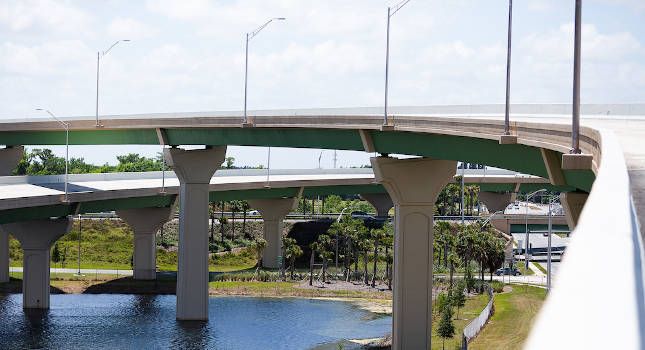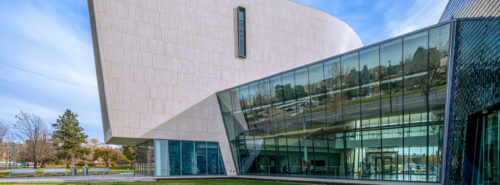Dependable transportation networks through the lens of resilience
Creating a resilient transportation network implies that when something unexpected happens so systems can continue to operate.
The term resilience is often associated with building infrastructure, storm protection, and community preparedness. However, it’s also applicable to transportation assets of various kinds, including highways, bridges, and interchanges; aviation facilities; freight rail, passenger rail, and mass transit systems; and port and intermodal facilities.
Creating a resilient transportation network implies that when something unexpected happens – a storm, an accident, a power outage, traffic congestion, or a data breach – systems can continue to operate. This can be critical during a disaster event, as transportation systems are relied upon to support safe evacuations, emergency vehicle access, and the delivery of fuel and other vital supplies.
Resilient transportation from coast to coast
Defining resilience is unique to each mode of transportation. A team based in our Virginia Beach office recently completed a living shoreline restoration project, where our experts stabilized the shoreline along the Elizabeth River near Norfolk Southern Railway Company’s Lamberts Point Coal Terminal.
Working with two other consultants, Coastal Marine Structures and Emerald Forest, we designed a series of segmented rock breakwaters with a half-acre of native wetland habitat extending the length of three football fields to buffer the shoreline from wind, waves, and ship wake. Norfolk Southern voluntarily funded this living shoreline project, a testament to a transportation company advancing local and regional resilience initiatives. For a region that is wrestling with sea level rise and adaptation, this project is a great model for others on how to restore a vibrant industrial shoreline and simultaneously contain future erosion.

Envision credits are issued for projects meeting certain thresholds for categories, including quality of life, leadership, resource allocation, natural world, and climate and resilience. Courtesy: Dewberry
Further down the East Coast in Florida, through our general engineering contract, we are helping the Central Florida Expressway Authority pursue an Envision Platinum award for the proposed Lake Orange Expressway. Envision was created by the Institute for Sustainable Infrastructure to provide a consistent, consensus-based framework for assessing sustainability and resilience in infrastructure. The 3.75-mile connector, which is a new alignment tolled roadway between U.S. 27 and State Road 429, is located in Orange and Lake counties, just west of Orlando. Features included for Envision scoring involve an in-road electric vehicle charging pilot project, the elimination of traffic signals through the use of free-flow interchanges, and the development of a zero-scape landscaping program, which will include the installation of native plants and require no irrigation systems.
In California, our transportation engineers are focusing on creating resilient infrastructure that supports critical operations during natural disasters, including earthquakes and wildfires.
Resilience is a critical consideration that is gaining importance as we continue to advance and adapt infrastructure. Our built environment is expanding, and whether it’s environmental implications up and down the East Coast, creating sustainable transportation networks in the Southeast, or mitigating weather-related power outages that impact traffic lights in the West, creating a dependable transportation network is necessary for resilient operations.
Dewberry is a CFE Media and Technology content partner.
Original content can be found at www.dewberry.com.
Do you have experience and expertise with the topics mentioned in this content? You should consider contributing to our CFE Media editorial team and getting the recognition you and your company deserve. Click here to start this process.







